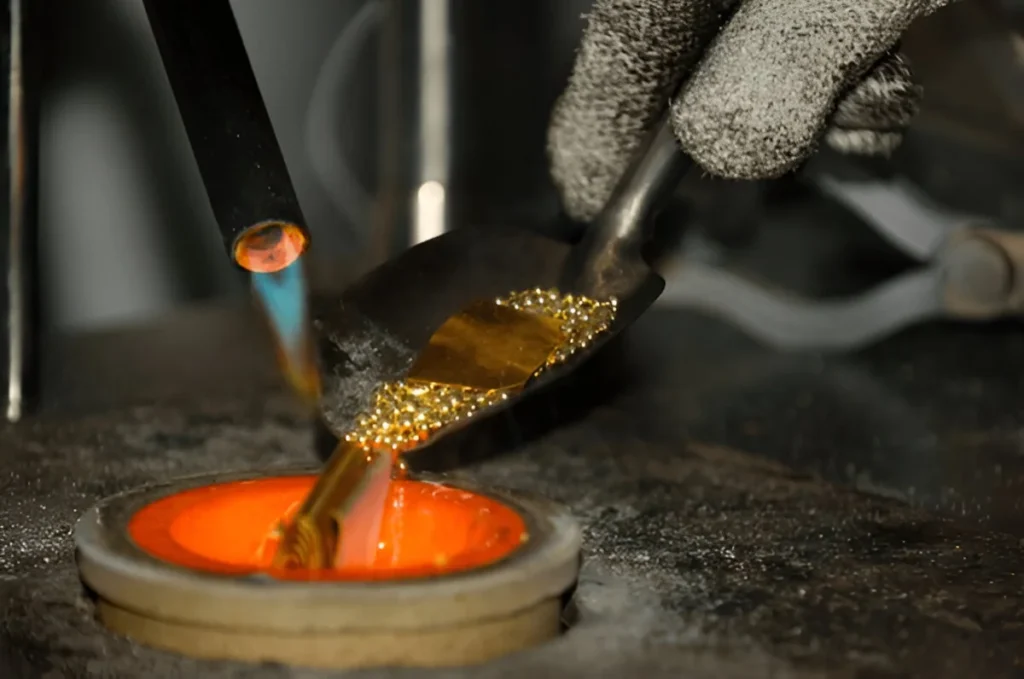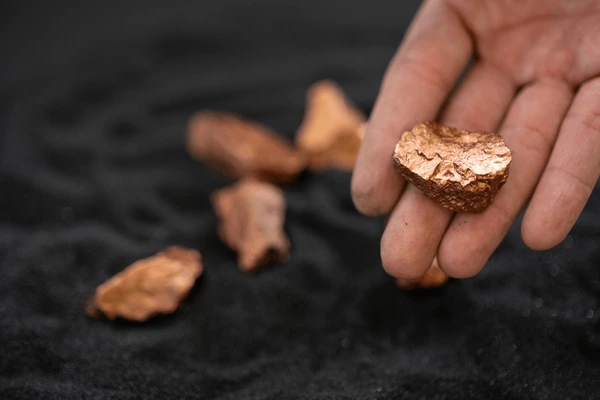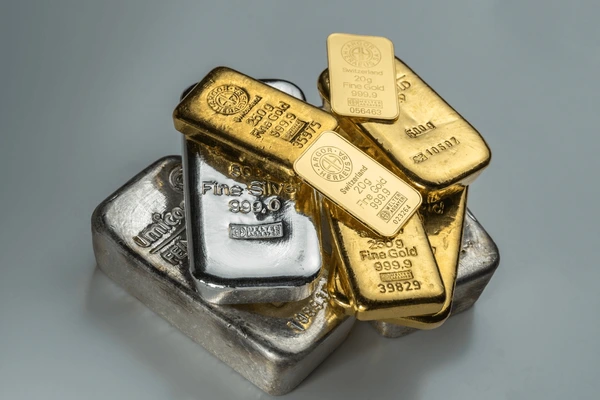Sayanava Sinha Roy
28.10.2025
Which metals can be recovered during gold refining
Discover which metals can be recovered during gold refining with insights from a reputed Gold Buyer. Learn how modern refining ensures purity, sustainability, and value recovery.
Understanding the Science Behind Gold Refining
Gold refining is not just about purifying gold—it’s also about discovering what lies beneath the glitter. Every piece of gold jewelry, electronic component, or scrap contains trace elements of other metals. When refined properly, these by-products can be recovered, reused, and even traded, turning waste into worth.
Table of Contents
This process plays a crucial role in both the economy and environmental sustainability. By recovering valuable metals, refineries reduce the demand for fresh mining and contribute to a cleaner circular economy.
Why Metal Recovery Matters
Before diving into the specific metals that can be recovered, it’s important to understand why recovery is essential in gold refining.
- Environmental Conservation: Recycling precious metals prevents unnecessary mining and reduces industrial waste.
- Economic Efficiency: Extracting additional metals increases total value from each batch of gold scrap.
- Purity Assurance: The removal of other metals ensures that refined gold meets international standards (like 99.99% purity).
- Resource Sustainability: Helps preserve limited natural metal reserves by maximizing reuse.
In essence, the refining process is not only about perfecting gold but also about sustaining the planet and optimising every gram extracted.
The Composition of Raw Gold
Raw gold rarely exists in its purest form. Whether mined or recycled, gold typically contains impurities like silver, copper, palladium, platinum, zinc, or nickel.
Each of these metals interacts differently during refining, requiring precision methods such as:
- Aqua regia process (for dissolving base and noble metals)
- Electrolysis (for ultra-pure separation)
- Cupellation and smelting (for testing and concentration)
These steps ensure that every trace element is accounted for and recoverable.

Common Metals Recovered During Gold Refining
When a skilled refiner begins the process, several metals can be extracted besides gold itself. Let’s look at the most valuable and commonly recovered ones.
1. Silver (Ag)
Silver is one of the most frequent by-products of gold refining. Because gold and silver often occur together in natural deposits and jewelry alloys, refining separates the two efficiently.
Why it matters:
- Silver holds its own significant market value.
- It’s widely used in electronics, jewelry, and solar panels.
- Recovered silver can be resold or reused without quality loss.
Recovery process:
Refiners use nitric acid or electrolysis to separate silver from gold effectively.
2. Platinum (Pt)
Platinum belongs to the same group as gold and is often found in traces within gold ore or old jewelry.
Why it matters:
- It’s one of the most valuable and rarest metals.
- Used in catalytic converters, medical tools, and luxury jewelry.
- Platinum recovery reduces the need for extensive mining.
Recovery process:
Hydrometallurgical methods or chemical precipitation help isolate platinum during the refining cycle.
3. Palladium (Pd)
A close relative of platinum, palladium is increasingly in demand due to its industrial applications—especially in electronics and catalytic converters.
Why it matters:
- Rising demand due to clean energy and automotive industries.
- Recovered palladium can fetch high returns.
Recovery process:
During refining, palladium is separated using solvent extraction or precipitation techniques.
4. Copper (Cu)
Although not precious, copper frequently appears in lower-karat gold alloys. Its recovery adds industrial value and supports recycling efforts.
Why it matters:
- Recovered copper can be reused in wires, motors, and construction materials.
- It ensures that gold achieves higher purity levels post-refining.
Recovery process:
Copper is extracted using electrolytic refining methods, leaving pure gold behind.
5. Nickel (Ni)
Nickel appears in certain gold alloys, especially those used for white gold or decorative coatings.
Why it matters:
- Nickel recycling supports the steel and electronics industries.
- It enhances sustainability by reducing industrial waste.
Recovery process:
Nickel is recovered through chemical separation during gold purification.
6. Zinc (Zn)
Zinc is another alloying metal commonly found in gold-plated materials and ornaments.
Why it matters:
- Useful in galvanization, die-casting, and battery manufacturing.
- Its recovery helps minimize environmental impact.
Recovery process:
Zinc is separated during smelting when other impurities are oxidised and removed.
Hidden Value in Refining: The Sustainable Edge
Modern refining goes beyond simple purification—it’s an innovation-led process emphasizing resource recovery and environmental responsibility.
Here’s how professional refineries contribute to sustainability:
- Eco-friendly technologies minimize chemical waste and emissions.
- Closed-loop recovery systems capture and reuse precious metals multiple times.
- Traceability and certification ensure transparency in every transaction.
- Energy-efficient methods reduce carbon footprint.
This sustainable approach ensures that refining benefits both business and the planet.
How Refined Metals Shape Different Industries
Recovered metals find new life in various sectors, each with a vital role to play in global progress:
| Metal | Major Use | Industry |
|---|---|---|
| Gold | Electronics, Jewelry, Finance | Technology, Luxury |
| Silver | Solar, Medical, Electronics | Renewable Energy |
| Platinum | Automotive, Jewelry, Medicine | Clean Energy |
| Palladium | Catalytic Converters, Sensors | Auto Industry |
| Copper | Electrical Wiring, Machinery | Infrastructure |
| Nickel | Steel, Batteries | Manufacturing |
This multi-industry usage highlights how refining supports sustainable innovation by feeding recycled resources back into the global supply chain.
The Role of Professional Refiners in Metal Recovery
Recovering these metals demands accuracy, advanced technology, and years of expertise. Professional refiners combine analytical chemistry, XRF testing, and controlled processes to ensure that every element is extracted efficiently and safely.
Choosing the right expert helps ensure:
- Maximum yield of all valuable metals
- Safe and compliant refining practices
- Transparent weight and purity reports
- Environmentally conscious waste handling
Partnering with an experienced and certified refinery guarantees not just pure gold but also maximum recovery value from your materials.
How the Best Gold Buyer Ensures Ethical Recovery
A reputable and responsible refinery not only values gold purity but also ensures ethical recovery of all metals involved. The Best Gold Buyer in Kolkata, for example, prioritises:
- Eco-conscious refining using non-toxic methods
- Accurate metal recovery with XRF and fire assay testing
- Transparent transactions and verified purity reports
- Customer trust built through years of refining excellence
This holistic approach transforms the refining process into a sustainable and reliable service for both individual sellers and industrial clients.

FAQs on Gold Refining and Metal Recovery
1. Can all metals be recovered during gold refining?
Not all, but most precious and semi-precious metals like silver, platinum, palladium, copper, and nickel can be efficiently recovered.
2. How do refiners test for purity?
Refineries use methods like X-ray fluorescence (XRF), fire assay, and acid testing to determine gold’s exact purity and composition.
3. Is metal recovery environmentally safe?
Modern refiners use eco-friendly and closed-loop systems that minimize pollution and chemical waste.
4. How much value can recovered metals add?
Depending on the composition, recovered metals can increase total material value by 10–20%.
5. Can old jewellery or scrap yield other metals?
Yes, especially in mixed alloys or electronics. Many old items contain recoverable silver, copper, or even platinum traces.
Turning Impurities into Opportunities
Gold refining isn’t just about shining metal—it’s about transformation. Each stage of refining uncovers hidden elements that hold their own worth. Recovering these metals not only increases financial returns but also strengthens our commitment to sustainability.
Through advanced refining, expertise, and responsible recovery practices, companies like Rahul Refiners and Analyzer continue to turn the art of refining into a science of resource renewal—ensuring that nothing valuable ever goes to waste.
Popular Post



